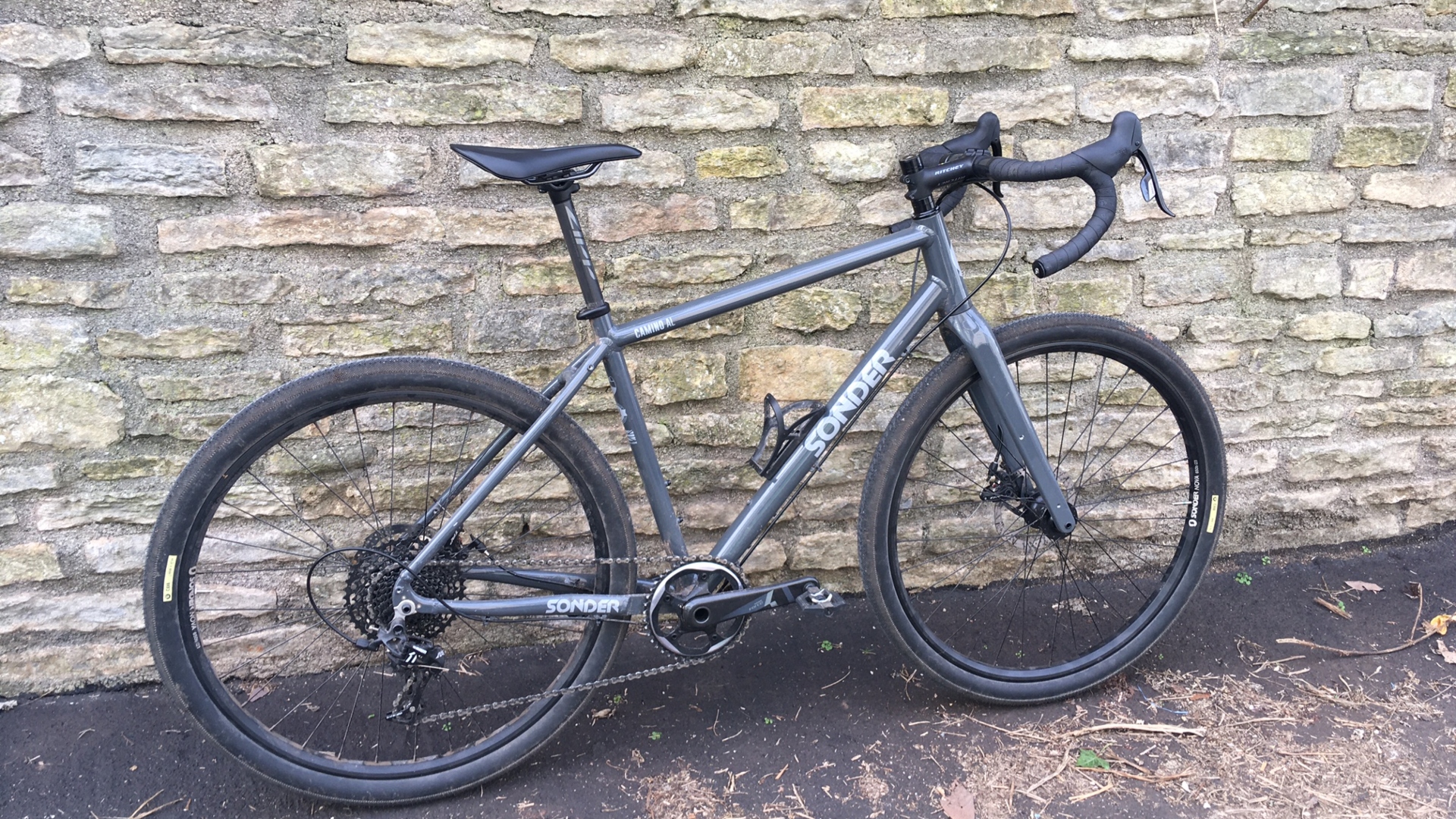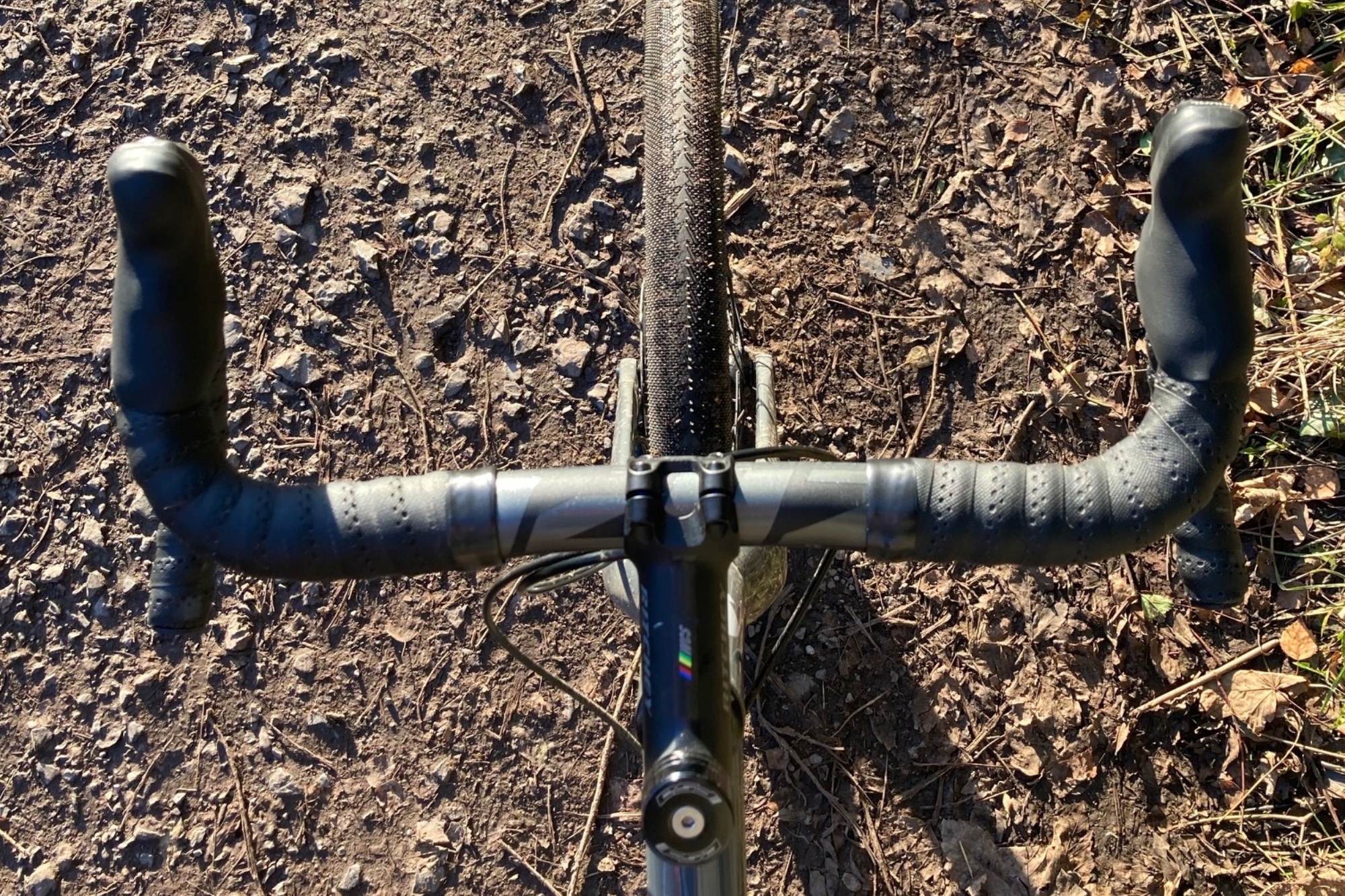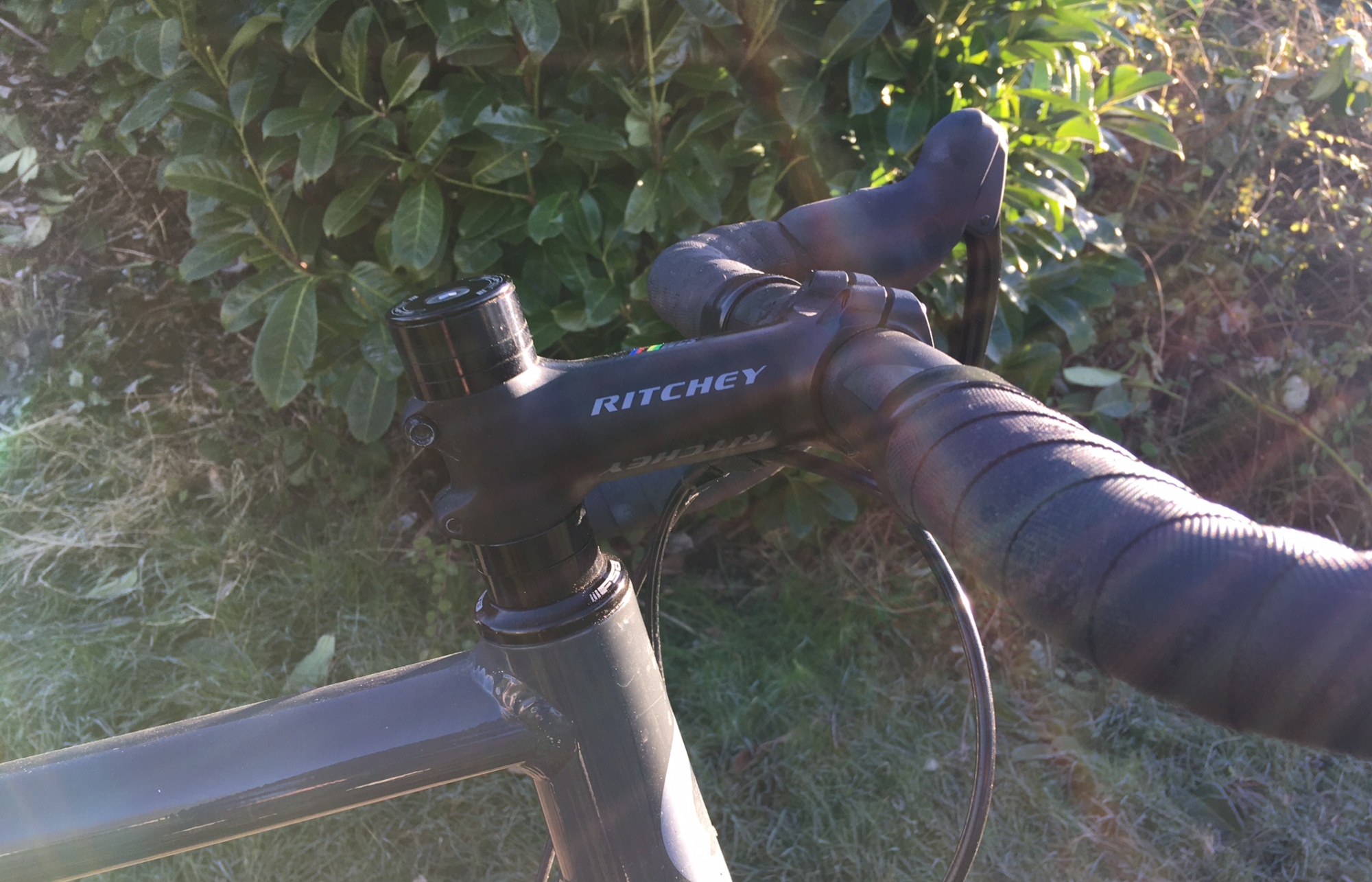I turn 50 this year, here’s why I’m gifting myself a new wheelset, not a new bike
Looking for more comfort on the road, I decided to explore the inherent versatility of my gravel bike

While I’ve never been one for owning lots of bikes, there was a time when I at least had a few to ‘cover all the bases’. But over the years I stopped commuting. I moved countries and had to downsize. I also became older.
Luke Friend has worked as a writer, editor and copywriter for twenty five years and is a qualified bicycle mechanic. He has been a cycling enthusiast from an early age and is a keen follower of bike racing to this day as well as a regular road and gravel rider. He rides a Sonder Camino, and is 49-years-old, until April.
As I did my priorities changed along with my flexibility. Never a competitive cyclist, or a fast one, I now more than ever enjoyed riding at a touring pace, where comfort and enjoyment trump all. I’d even taken to riding without my Garmin cycling computer in pursuit of a more carefree ride.
Naturally these changes have been reflected in the bikes I ride. And it’s not always been a smooth transition. A road bike was my default setting for decades but as I enter my 50th year it’s been harder to find comfort on the style of bikes I used to ride. To create a suitable riding position, one I could hold for the entirety of a journey without regretting it later, meant having to tweak the bike’s set-up.
Adding more spacers felt like drawing a mustache on the Mona Lisa
But adding more spacers, inverting the stem and other such sinful behaviour felt like drawing a mustache on the Mona Lisa. These are expensive machines after all, often elegant and designed for a purpose. If I can no longer ride one comfortably then perhaps I should simply ride something else instead?
The option to buy an out-and-out endurance road bike, alongside attending some yoga classes, was clearly an option. But a new bike is a serious outlay and I continued to procrastinate about how to best fix my aching back. However, the more I rode my gravel bike, the more I realised I’d been sitting on the answer for quite some time.

My Sonder Camino gravel bike with 650b wheels
Gravel bikes have long been touted for their versatility. I’d done the same myself, in person and in copy. But when it came to my own riding my thinking had remained a little more rigid, seeing them as a fun, off-road alternative when time was too short for a road ride. But a spate of riding my gravel bike on the road due to an extended period of foul weather ended up being my eureka moment.
Rather than shell out on a new road bike with more upright geometry and wider tire clearances, why not just ride the bike I was on? The one with upright geometry and wide tire clearance. Archimedes eat your heart out.
The latest race content, interviews, features, reviews and expert buying guides, direct to your inbox!
But can a gravel bike really ‘double up’ on the road for the long haul, negating the need to splash out on something brand new? Could the best option for you turn out to be N+0 rather than N+1?
Can a gravel bike work on the road?
While perhaps obvious, it’s worth stating up front that this solution won’t make sense for all. If you race at the weekends and train accordingly then you don’t need me to tell you that owning a dedicated road bike is non-negotiable. But if you don’t have the luxury of space, pots of money, or both; or like me find that a modern ‘out-and-out’ road bike is no longer for you it’s worth some serious consideration.
Like road bikes, gravel bikes now cover a wide spectrum; there are models designed for ‘off-the-grid’ adventures and those created with faster riding or gravel racing in mind. In comparison to a road bike, the adventure bike will have a far longer wheelbase and a significantly slacker headtube angle. The gravel ‘racer’ will likely sport geometry that’s akin to an endurance road bike, with a more generous stack height in play. Clearly bikes at this end of the scale will feel far more at home on the road - they may even be made from carbon and feature fully integrated cables, with only the greater tire clearance the obvious difference.

There are plenty of gravel bars with a subtle flare that work just as well on the road
I found that when it came to my gravel bike’s geometry I didn’t need to play around much at all to find a riding position that worked across road and off-road. I tried a couple of different stem lengths and opted for a 100mm, which I matched to a 42cm wide handlebar that had a little flare at the drops. I also experimented with the stem height; while the higher stack of my gravel bike will make it slower on the road, at the speeds I ride the added drag was never going to be something I noticed. But rolling resistance was.

Keeping the steerer tube uncut allowed me adjust the stem height to find the best position for both on-road and off riding
When I first began to log road miles on my gravel bike it was clear that the comfort I was enjoying from the voluminous tires was perhaps coming at some cost. On rough tarmac it was negligible but when I hit a run of the smooth stuff, the wide knobblies felt cumbersome. They also made quite the noise, which became a soundtrack for my struggles.
Fortunately, there are a myriad of tire options. I’ve done my fair share of experimenting but found that using a single wheelset I was having to swap between two or even three sets of tires, which is far from practical. Slicks work like a dream on the road but are seriously limited off it. I ended up opting for a shallow grid pattern with a central slick line in an attempt to eliminate the tire changes. But it felt like too much of a compromise year-round.
A two wheelset approach
So could you solve this issue with a second wheelset?
The ‘second wheelset’ is used as a selling point by some gravel and all-road bike brands; Vitus even released its Venon EVO in two builds to illustrate the bike’s versatility, one with slick tires and the other with knobblies. Clearly buying another wheelset and setting it up for road use is considerably cheaper than buying another bike. It’s also still practical for those who don’t have much space.

One of the 700c wheelsets I trialled, fitted here with 38mm tires
Tips for choosing your ‘on bike to rule them all’
Naturally, the ‘one bike, two wheelset’ option means you’ll need to learn to compromise - and gearing is another area where this is unavoidable.
The kind of gravel bike you own will likely dictate its drivechain. More adventure-orientated machines are typically equipped with a single chainring and super wide range cassette, perhaps a 42 or 44t. A gravel bike designed with speed as a focus will probably feature gearing not too dissimilar from an endurance road bike, with a sub-compact 2x chainset and a cassette that will still have a low gear, perhaps as much as 36t, while also delivering smaller jumps at the taller end.
If saving money is the primary driver, then sticking with what you have is your likely choice. It’s what I’ve done for now, accepting that my 11-speed SRAM 1x drivechain isn’t always as efficient as I’d like on the road. That said, I love its simplicity and I’ve found myself to be more adaptable than I might have expected. Now I hardly notice the jumps and always appreciate that low gear when going uphill. The only change I see in the future is fitting a 12-speed drivechain and utlising SRAM’s 10t cassettes.
However, if you’re buying a gravel bike with the view to using it as a ‘do-it-all’, you’ll want to weigh up the pros and cons of the drivechain before you commit. There’s no right or wrong answer here, but considering the amount of time you’ll be riding on the road, and the kind of pace and distances you typically ride, is sensible.
Personally, I’ve done an about turn on the matter. I’ve gone from thinking that swapping out wheels was additional faff I didn’t need, to now committing to the ‘solution’. Given that I’d long been riding 650b wheels on my gravel bike, it ended up making a lot of sense. I can keep this set fitted with 47mm tires, likely alternating traction levels for winter and summer to cover my off-road riding. I can then add a 700c wheelset dedicated to the road, setting it up with narrower slicks. I’m fortunate to have been able to test a few sets of 700c wheels before making my decision, so I was able to assess both the difference in ride quality and the feasibility of swapping between the two. The former was considerable, while the latter ended up being of little issue.
So can the ‘less is more’ approach really work here? While no single bike can take the place of two, three or more options, I’ve been left convinced that with some consideration, and a little compromise, it can do a pretty good job of it. I’ve actually found using one bike pretty liberating, and it certainly helps with space around the house as well saving a considerable amount of money. And while I can’t promise it's a permanent solution - I know there’s many nice bikes on the horizon that will likely turn my head - for now I’m satisfied. And my back’s a little happier, too.
Luke Friend has worked as a writer, editor and copywriter for over twenty five years. Across books, magazines and websites, he's covered a broad range of topics for a range of clients including Major League Baseball, Golf Digest, the National Trust and the NHS. He has an MA in Professional Writing from Falmouth University and is a qualified bicycle mechanic. He has been a cycling enthusiast from an early age, partly due to watching the Tour de France on TV. He's a keen follower of bike racing to this day as well as a regular road and gravel rider.